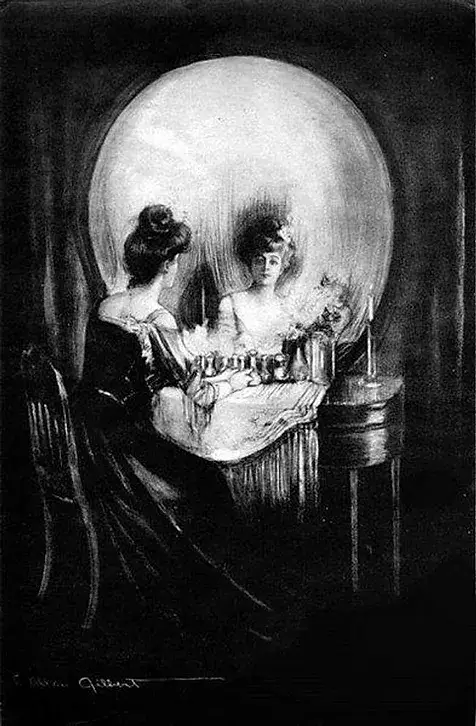Optical illusions have captivated human imagination for centuries, playing tricks on our eyes and challenging our perception of reality. These intriguing images create a disconnect between what we see and what we know, often leaving us puzzled and amazed. But what exactly are optical illusions, and how do they work? This article delves into the fascinating world of optical illusions, exploring their history, types, the science behind them, and their impact on art and design.

What Are Optical Illusions?
Optical illusions are visual phenomena that occur when our brain interprets an image in a way that differs from the physical reality. In essence, they are misinterpretations or distortions of what we perceive. This discrepancy can be caused by various factors, including the structure of our eyes, the way our brain processes visual information, and even the context in which we see the image.
Optical illusions can be categorized into several types, each playing on different aspects of visual perception:
- Literal Optical Illusions: These illusions create images that are different from the objects that make them. For instance, the famous “Young Woman-Old Woman” illusion shows two different images depending on how you look at it.
- Physiological Optical Illusions: These are caused by excessive stimulation of the eyes and brain, such as the afterimages you see after staring at a bright light.
- Cognitive Optical Illusions: These illusions are the result of unconscious inferences made by the brain. A classic example is the Müller-Lyer illusion, where two lines of equal length appear different due to the direction of the arrowheads at the ends.
The Science Behind Optical Illusions
Optical illusions exploit the complex processes involved in visual perception. When we see an object, light reflects off it and enters our eyes, where it is focused on the retina. The retina converts light into electrical signals that are sent to the brain, where they are processed to form an image. However, this process is not as straightforward as it seems.
Our brain uses various cues to interpret the visual information it receives. These cues include color, light, shadow, perspective, and motion. Optical illusions occur when these cues are manipulated in such a way that the brain misinterprets the information. For example, the brain might perceive depth where there is none or interpret a 2D image as a 3D object.
One common phenomenon that optical illusions exploit is perceptual constancy—the brain’s ability to maintain a stable perception of an object despite changes in lighting, angle, or distance. Illusions play on this constancy by presenting images that conflict with the brain’s expectations, leading to a distorted perception.

Historical Significance of Optical Illusions
Optical illusions have been a subject of fascination for centuries, with roots tracing back to ancient Greece. The philosopher Epicharmus (c. 540–450 BC) and Protagoras (c. 490–420 BC) were among the first to theorize about visual tricks and their effects on perception. In art, illusions have been employed to create depth, motion, and dimension in paintings and sculptures.
During the Renaissance, artists like Leonardo da Vinci used techniques such as trompe-l’œil (French for “deceive the eye”) to create hyper-realistic images that appeared three-dimensional. This technique remains popular in art today, especially in street art and murals.
In the 19th century, the invention of the stereoscope by Sir Charles Wheatstone allowed people to view two slightly different images simultaneously, creating the illusion of depth. This was one of the earliest forms of 3D imagery, laying the groundwork for future developments in visual technology.
Optical Illusions in Modern Art and Design
In contemporary times, optical illusions have transcended mere curiosities and have become integral to various fields, including art, design, and architecture. Artists such as M.C. Escher have become famous for their intricate and mind-bending works that challenge perceptions of reality. Escher’s works, like “Relativity” and “Ascending and Descending,” play with perspective and impossible objects, leaving viewers questioning what is real and what is an illusion.
In the field of design, optical illusions are used to create visually appealing patterns and effects. Designers use them in various applications, from fashion to interior design, to create dynamic and engaging visuals that capture attention and evoke emotional responses. For instance, in architecture, optical illusions can be used to manipulate the perception of space, making small rooms appear larger or creating the illusion of movement within static structures.

The Psychological Impact of Optical Illusions
Optical illusions do more than just trick the eye; they also have a significant impact on the mind. They challenge our understanding of reality, forcing us to reconsider our perceptions and the reliability of our senses. This can lead to a greater appreciation of the complexities of the human brain and how it processes information.
Moreover, optical illusions are often used in psychological studies to explore the mechanisms of perception and cognition. By studying how and why we fall for these visual tricks, researchers can gain insights into how the brain works, how it interprets the world, and how it can be influenced.
Conclusion
Optical illusions are a fascinating intersection of art, science, and psychology. They remind us that what we see is not always what is real and that our perception of the world is shaped by both our biology and our experiences. Whether through ancient art, modern design, or psychological experiments, optical illusions continue to captivate and challenge us, proving that the line between reality and illusion is often blurred.
























